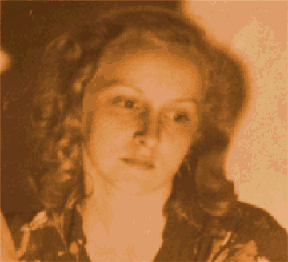
|

|

|

|
She showed an early talent as an artist, a talent which was encouraged by Mary L. Mason, director of art programming in the Durham School District. While she was in high school Eloise won a medal in the national show, Young America Paints. During high school her works were exhibited in four state-wide juried exhibitions at the Ca University of North Carolina, Chapel Hill. Later, she was a student of Gregory Ivy at the Beaufort Summer Art Colony in Beaufort, North Carolina. In 1942, shortly before her marriage to Page Smith, she won one of five national scholarships to the Art Students League in New York City. There she studied with Yasuo Kuniyoshi, George Bridgeman and Morris Cantor.
After completing her work at the Art Students League, Eloise moved with her husband, then an army lieutenant, to Colorado where she continued to explore the medium of watercolor and produced landscapes of the surrounding area. After the war, Eloise and Page lived in Baltimore, Maryland. While there, Eloise was selected to exhibit at the Baltimore Museum of Art in three juried exhibitions. Her work was also exhibited at the Fogg Art Museum of Harvard University.
In the post-war years, Eloise began to paint in casein and oil in addition to watercolor. Over a five year period, she produced a large body of work in these mediums in the Cambridge, Massachusetts area as well as in the small seaside towns of Nahant, Lynn, and Marblehead. Examples of this period of her work can be seen in "Christ Church"(1949),"Ocean Rocks 1"(1950) and "Lynn Harbor I"(1952). In 1953 Eloise and Page, with their three young children, moved to Santa Monica, California. There Eloise began a series of interiors and still lifes in oil such as "Fredericka's Chair" (1957), and "Patio With Orange Chair"(n.d.). She also continued her work in watercolor, creating a series of landscapes in the Malibu, Ojai and Warner Hot Springs areas: "Mandeville Canyon" (1960) and "Santa Monica Mountains" (1960).
In 1964 Eloise and her family moved to Santa Cruz, California where she continued her artwork. She explored a number of new materials and techniques: handmade, molded, and embossed paper, assemblage, fetish objects, constructions and collage. These pieces were shown in a solo exhibition at Mount Allison University in New Brunswick. During the next twenty years, Eloise continued working in her studio and exhibiting in museums and galleries across the country. She also headed the California State Arts Council. She started an art gallery at Cowell College, University of California at Santa Cruz, and curated over thirty exhibitions with the assistance of Gerald Norlund and other distinguished museum directors. She created the California Prison Arts Project, worked to start The Museum Without Walls in Santa Cruz, the Art Museum of Santa Cruz County, and the Cultural Council of Santa Cruz. She also held art workshops for children and was deeply interested in arts education.
Eloise continued to work on her own art, expanding its perimeters, exploring new methods and ideas, focusing on collage and assemblage until her death August 26, 1995.
|
|
Eloise's Resume
Senate Resolution
June 14, 1989
Kiss and Tell
Page Smith's Wife Reveals All
The night before Eloise died she became restless and tried to get out of bed. Because of her disorientation and weakness her older daughter Ellen tried to restrain her. Eloise said, "Get out of my way, I'm going to God!" It was one of the last things she ever said, but in some way summed up her entire life. It was towards God, or divinity, or compassion, or beauty that she was always going to, and it was best not to try to get in her way. She attained in her last months a radiant beauty that struck all who saw her. |
| HOME | BACK |